Animation Artifacts 30 Mar 2006 08:10 am
Gepetto goes to sleep
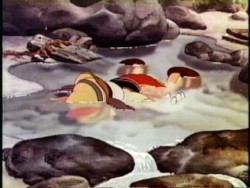 - Here are four more pages of the production scene drafts for Pinocchio. It takes us to the point where Gepetto turns out the light, and the small family goes to sleep.
- Here are four more pages of the production scene drafts for Pinocchio. It takes us to the point where Gepetto turns out the light, and the small family goes to sleep.
- I always was curious as to why all of these books about the production of animated films rarely talk about the actual production. I’m not even talking about books written today; they’re all about the stars at the microphones and not about the films – in other words all they want to do is sell dvds.
These production drafts, to my knowledge, have never made it into any such book. Halas came closest with his Techniques of Film Animation book when he talked about the director’s workbook, and we’ve seen plenty of versions of exposure sheets.
As a kid, I would have gone crazy over the image of such a chart. It was out of my experience, and I knew nothing about it. The first time I encountered such a thing was in working on Everybody Rides A Carousel. The production chart – not too different from the Disney ones – were posted on oaktag in the studio, and I, managing the production, would literally check off scenes as they moved from phase to phase. It was nothing I’d ever heard about in a book – I mean, it’s obvous, I guess, to have them. But I just hadn’t thought about it.
To this day, I still don’t know what a production chart/draft would look like in a couputer animation house; I’m sure they’re there, but no one mentions them. I guess I should look into it.
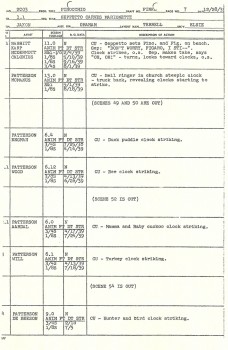
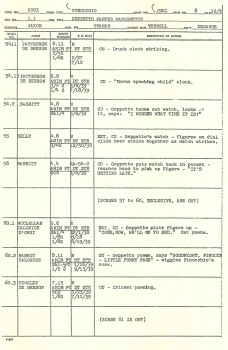
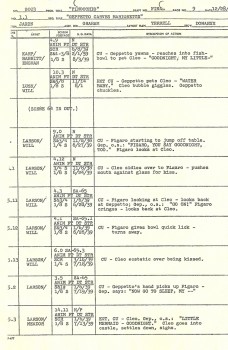
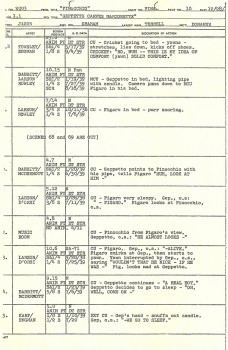

on 30 Mar 2006 at 9:01 am 1.Mark Mayerson said …
When we did Monster By Mistake, a cgi series for TV, Rob Smith created a visual database to track shots. Half of a box got colored in when a shot was assigned and the rest got colored in when it was approved. The coloring was done by a mouse click. There were separate columns for animation, lighting and rendering.
It was very handy. You called up the database interface, typed in which show and act you wanted to look at and it automatically gave you a visual indication of where everything stood. Rob also rigged it up where anybody could look at it, but animators could only affect the animation column, lighters the lighting column, etc. That prevented accidents.
on 30 Mar 2006 at 9:46 am 2.Michael said …
Thanks Mark; this is pretty much what I expected, but nice to know for sure. Why do you think this isn’t discussed in books about the making of … ? Do authors think it isn’t glamorous? Is it something that they think should be obvious?
on 30 Mar 2006 at 4:07 pm 3.Mark Mayerson said …
I’m sure that nobody outside the business ever thinks about things like production charts. I’m sure that people doing behind the scenes books or videos assume that it’s boring for the audience. Once you’re in the business, the stuff becomes endlessly fascinating.
on 31 Mar 2006 at 12:57 pm 4.Jenny Lerew said …
I agree with mark–but I also can easily imagine that an “Illusion of Life”-style book would benefit immensely from inclusion of draft photostats; in a way, the whole animation microcosm of production is there…thanks again for posting these. I love “Pinocchio” probably best of all the features, and this scene is just perfect, imho. Babbitt does a great job with Gepetto, and Figaro is just terrific–his little interrupted yawn, his annoyance that mitigates the schmaltz of Gepetto’s wistfulness(he’s a real little brat, isn’t he?)–all beautifully drawn. I guess by Eric Larson(I’d forgotten that). Wonderful.
on 01 Apr 2006 at 11:01 am 5.fsbohomes-qz said …
Good site… Nice design